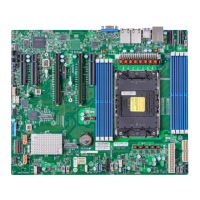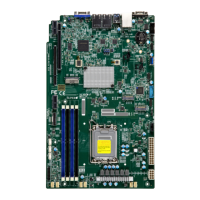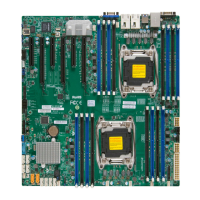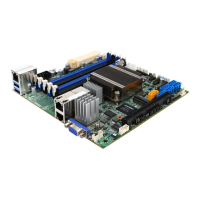Chapter 4: UEFI BIOS
77
Link L0p Enable
Select Enable for the system BIOS to enable Link L0p support. This feature allows the
CPU to reduce the UPI links from full width to half width in the event when the CPU's
workload is low in an attempt to save power. This feature is available for the system
that uses Intel processors with UPI technology support. The options are Disable, Enable,
and Auto.
Note: You can change the performance settings for non-standard applications by us-
ing this parameter. It is recommended that the default settings be used for standard
applications.
Link L1 Enable
Select Enable for the BIOS to activate Link L1 support. This feature will power down the
UPI links to save power when the system is idle. This feature is available for the system
that uses Intel processors with UPI technology support. The options are Disable, Enable,
and Auto.
Note: Link L1 is an excellent feature for an idle system. L1 is used during Package
C-States when its latency is hidden by other components during a wakeup.
KTI Prefetch
Select Enable for the KTI prefetcher to preload the L1 cache with data deemed relevant.
This allows the memory read to start earlier on a DDR bus in an eort to reduce latency.
Select Auto for the KTI prefetcher to automatically preload the L1 cache with relevant
data whenever is needed. The options are Disable, Enable, and Auto.
IO Directory Cache (IODC)
Select Enable for the IODC to generate snoops instead of generating memory lockups
for remote IIO (InvIToM) and/or WCiLF (Cores). Select Auto for the IODC to generate
snoops (instead of memory lockups) for WCiLF (Cores). The options are Disable, Auto,
Enable for Remote InvItoM Hybrid Push, InvItoM AllocFlow, Enable for Remote InvItoM
Hybrid AllocNonAlloc, and Enable for Remote InvItoM and Remote WViLF.
SNC
Sub NUMA Clustering (SNC) is a feature that breaks up the Last Level Cache (LLC) into
clusters based on address range. Each cluster is connected to a subset of the memory
controller. Enable this feature to improve average latency and reduce memory access
congestion for higher performance. The options are Auto, Disable, Enable SNC2 (2-clus-
ters), and Enable SNC4 (4-clusters).

